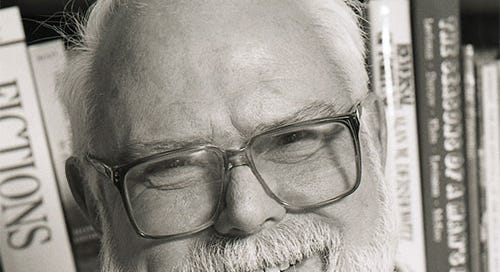Don Murray Masterclass #2: Use Metaphors Wisely
Metaphors activate the reader's visual brain, for better or for worse
Note: This article was originally a LinkedIn post. I’m reposting it here for my Substack subscribers.
Good writing uses concrete language—nouns and verbs that readers can easily visualize. Concrete language works because humans are visual animals. A good chunk of our brain is dedicated to processing visual information. When we read, our brains create mental images of the ideas. The more concrete the language, the easier it is to visualize the ideas.
Metaphors, however, can interfere with this process. For example, “The unit’s safety problems were just the tip of the iceberg” is problematic. There is no iceberg, so readers may struggle to visualize the writer’s intended meaning. Things get worse when writers overload their work with metaphors. Imagine an evaluation report: “He hit the ground running, kept the ball rolling, and left no stone unturned while thinking outside the box in pursuit of success.” The poor reader’s visual brain is melting down.
Still, metaphors can be powerful when used carefully. Murray, for example, uses the metaphor of an “autopsy” to describe how English teachers “dissect” writing. He later returns to the metaphor with the phrase, “repetitive autopsying doesn't give birth to live writing,” showing the difference between live and dead writing. As the essay progresses, we learn that live writing happens during the writing process, while dead writing refers to completed, finished work.
Most of us are trained as English teachers by studying a product: writing. Our critical skills are honed by examining literature, which is finished writing; language as it has been used by authors. And then, fully trained in the autopsy, we go out and are assigned to teach our students to write, to make language live.
Naturally we try to use our training. It’s an investment and so we teach writing as a product, focusing our critical attentions’ on what our students have done, as if they had passed literature in to us. It isn’t literature, of course, and we use our skills, with which we can dissect and sometimes almost destroy Shakespeare or Robert Lowell to prove it.
Our students knew it wasn’t literature when they passed it in, and our attack usually does little more than confirm their lack of self-respect for their work and for themselves; we are as frustrated as our students, for conscientious, doggedly responsible, repetitive autopsying doesn’t give birth to live writing. The product doesn’t improve, and so, blaming the student—who else?—we pass him along to the next teacher, who is trained, too often, the same way we were. Year after year the student shudders under a barrage of criticism, much of it brilliant, some of it stupid, and all of it irrelevant. No matter how careful our criticisms, they do not help the student since when we teach composition we are not teaching a product, we are teaching a process.
After the introduction, Murray continues the metaphoric theme of "live" writing by using words like discovery, exploration, feel, learning, language in action, excitement, searching, revealing, and evolving. These word choices reinforce the idea that writing is most alive when we’re in the process of producing it. Moreover, consistently returning to this theme helps the piece cohere (hang together as a whole).
What is the process we should teach? It is the process of discovery through language. It is the process of exploration of what we know and what we feel about what we know through language. It is the process of using language to learn about our world, to evaluate what we learn about our world, to communicate what we learn about our world.
Instead of teaching finished writing, we should teach unfinished writing, and glory in its unfinishedness. We work with language in action. We share with our students the continual excitement of choosing one word instead of another, of searching for the one true word.
This is not a question of correct or incorrect, of etiquette or custom. This is a matter of far higher importance. The writer, as he writes, is making ethical decisions. He doesn’t test his words by a rule book, but by life. He uses language to reveal the truth to himself so that he can tell it to others. It is an exciting, eventful, evolving process.
Use metaphors sparingly—do not overload your writing with them. Make sure they help readers visualize your ideas instead of distracting from them. Above all, avoid tired clichés. They are often the first things that come to mind; take the time to think of something fresh.



